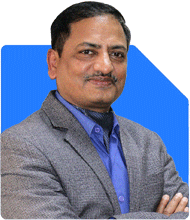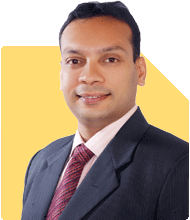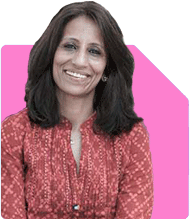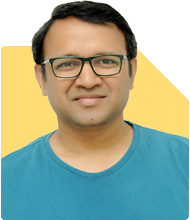Ramalingam Kalirajan |10894 Answers |Ask -Follow
Mutual Funds, Financial Planning Expert - Answered on May 16, 2024
He has an MBA in finance from the University of Madras and is a certified financial planner.
He is the director and chief financial planner at Holistic Investment, a Chennai-based firm that offers financial planning and wealth management advice.... more

what are the avenues for generating regular income, for a person like me who retires in few months from now?
1. Pension Plans: If you're eligible for a pension from your employer or government, it can serve as a reliable source of regular income in retirement. Evaluate the pension options available to you and understand the payout terms.
2. Annuities: Consider purchasing an annuity from a reputable insurance company. An annuity provides regular payments over a specified period or for life, offering a predictable income stream during retirement.
3. Fixed Deposits (FDs): Invest a portion of your retirement corpus in fixed deposits. FDs offer a guaranteed return at fixed interest rates, providing a steady income stream. Opt for cumulative or non-cumulative FDs based on your income requirements.
4. Senior Citizen Savings Scheme (SCSS): SCSS is specifically designed for individuals aged 60 and above, offering attractive interest rates and quarterly payouts. It provides a safe investment avenue with assured returns.
5. Dividend-Paying Stocks: Invest in dividend-paying stocks of established companies. Dividends can provide a regular source of income while offering the potential for capital appreciation over the long term. However, ensure a diversified portfolio to mitigate risks.
6. Systematic Withdrawal Plans (SWPs): If you have investments in mutual funds, consider setting up SWPs. SWPs allow you to withdraw a predetermined amount at regular intervals, providing a systematic income stream while keeping your investments intact.
7. Rental Income: If you own property, consider renting it out to generate rental income. Rental properties can provide a steady source of cash flow, supplementing your retirement income. However, be mindful of maintenance costs and tenant management.
8. Reverse Mortgage: If you own a home, explore the option of a reverse mortgage. A reverse mortgage allows you to borrow against the equity of your home while retaining ownership. It provides a regular income stream without the need to sell your property.
9. Freelancing or Consulting: Leverage your skills and expertise to take up freelancing gigs or consulting assignments. Part-time work can supplement your retirement income while keeping you engaged and productive.
10. Government Schemes: Explore government schemes targeted at senior citizens, such as the Pradhan Mantri Vaya Vandana Yojana (PMVVY). These schemes offer guaranteed returns and regular payouts, providing financial security in retirement.
Final Thoughts
As you transition into retirement, diversifying your income sources can help mitigate risks and ensure financial stability. Consider consulting with a Certified Financial Planner to tailor a retirement income plan aligned with your goals and risk tolerance.
Best Regards,
K. Ramalingam, MBA, CFP,
Chief Financial Planner,
www.holisticinvestment.in
You may like to see similar questions and answers below
Dev Ashish | Answer |Ask -Follow
MF Expert, Financial Planner - Answered on Apr 26, 2023
Sanjeev Govila | Answer |Ask -Follow
Financial Planner - Answered on Jun 07, 2023
Krishna Kumar | Answer |Ask -Follow
Workplace Expert - Answered on Mar 06, 2024
Ramalingam Kalirajan |10894 Answers |Ask -Follow
Mutual Funds, Financial Planning Expert - Answered on May 07, 2024
Ramalingam Kalirajan |10894 Answers |Ask -Follow
Mutual Funds, Financial Planning Expert - Answered on Jun 03, 2025
Radheshyam Zanwar |6747 Answers |Ask -Follow
MHT-CET, IIT-JEE, NEET-UG Expert - Answered on Dec 16, 2025
Shalini Singh |181 Answers |Ask -Follow
Dating Coach - Answered on Dec 16, 2025
Patrick Dsouza |1429 Answers |Ask -Follow
CAT, XAT, CMAT, CET Expert - Answered on Dec 16, 2025
Nayagam P P |10858 Answers |Ask -Follow
Career Counsellor - Answered on Dec 16, 2025
Nayagam P P |10858 Answers |Ask -Follow
Career Counsellor - Answered on Dec 16, 2025
Samraat Jadhav |2510 Answers |Ask -Follow
Stock Market Expert - Answered on Dec 16, 2025
Samraat Jadhav |2510 Answers |Ask -Follow
Stock Market Expert - Answered on Dec 16, 2025
Nayagam P P |10858 Answers |Ask -Follow
Career Counsellor - Answered on Dec 16, 2025
Nayagam P P |10858 Answers |Ask -Follow
Career Counsellor - Answered on Dec 16, 2025
Ramalingam Kalirajan |10894 Answers |Ask -Follow
Mutual Funds, Financial Planning Expert - Answered on Dec 16, 2025





























